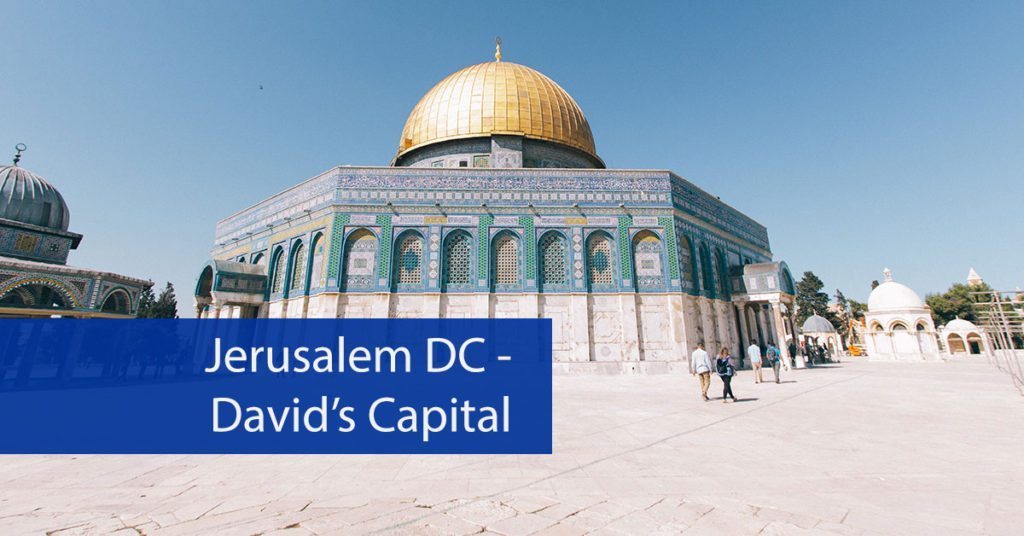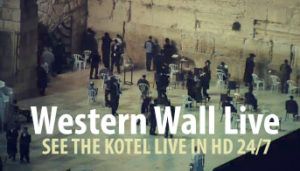 One of the most important days in Jewish life is Yom Yerushalayim, the celebration of the reunification of the Holy City under Jewish control during the Six-Day War in 1967. This year Yom Yerushalayim—Jerusalem Day—is a special celebration because this year marks the 50th anniversary of this prophetic event. The Holy City became the capital of Israel when David conquered it about a thousand years before the birth of Christ. For the past 3,000 years, the Jewish people have regarded Jerusalem as their capital city. My dear friend Prime Minister Menachem Begin called Jerusalem “the eternal capital of Israel.”
One of the most important days in Jewish life is Yom Yerushalayim, the celebration of the reunification of the Holy City under Jewish control during the Six-Day War in 1967. This year Yom Yerushalayim—Jerusalem Day—is a special celebration because this year marks the 50th anniversary of this prophetic event. The Holy City became the capital of Israel when David conquered it about a thousand years before the birth of Christ. For the past 3,000 years, the Jewish people have regarded Jerusalem as their capital city. My dear friend Prime Minister Menachem Begin called Jerusalem “the eternal capital of Israel.”
Yet most of the world refuses to recognize Israel’s historical, political, military, and Biblical claim to the Holy City. Israel is the only nation which is not allowed to choose its own capital. But what man thinks is not as important as what God thinks. Jerusalem D.C.—David’s Capital—is now and always will be the center of the Jewish state. It is from the Holy City that Jesus will one day rule the world. And despite the plots and schemes being devised to strip Jerusalem away from Israel, we stand firm in recognizing that Jerusalem belongs to the Jewish people by divine decree. Here is how the Holy City came to be what it is today:
When Israel’s War of Independence ended, the city of Jerusalem was divided. Barbed wire and concrete separated the part of the city under Jordanian control and the part that was under Jewish control. Though the armistice agreement that ended the fighting in 1949 said that the Jews would be allowed access to the Western Wall and the Old City, the Jordanians did not keep their part of the bargain.
In 1967, following a massive Soviet Union arms buildup, the governments of Egypt and Syria were threatening war against Israel. Following the decision by General Nasser of Egypt to close the Strait at Sharm El-Sheikh to Israeli shipping (a deliberate act of war), the United Nations peacekeeping forces were removed.
With war looming, Israeli intelligence (led then by my friend Isser Harel) tried to convince Jordan’s King Hussein to not join the looming Arab attack. Instead, Hussein flew to Egypt and signed a defense pact. On the morning of June 5, 1967, Israeli forces launched a lighting attack, which left the Egyptian Air Force destroyed on the ground. On the same day, successful raids also destroyed much of the Syrian Air Force as well.
Israeli General Moshe Dayan made a crucial strategic decision to impose a complete news blackout. Rather than bragging about their success, the Israeli Defense Forces released no news about the attacks. At the same time, Egypt was boasting publicly about having won a great victory against Israel. The Israeli government wanted to avoid a Russian-led move to impose a United Nations ceasefire to protect their client states.
The unexpected result of the Israeli news blackout and the false Egyptian propaganda was that it convinced King Hussein to enter the war, despite the promises from Israel that they would not attack Jordan. Hussein ordered his forces to take control of the rest of Jerusalem and unite the city under his rule. Israeli troops immediately responded to halt the Jordanian advance. They were heavily outnumbered, but fought ferociously for the sake of the Holy City.
Colonel Mordechai Gur and his 55th Paratroop Brigade had been scheduled for deployment in the Sinai. Things were going so well there, however, that the high command offered their services to Uzi Narkiss, commander of the IDF. Colonel Gur and his staff arrived in Jerusalem a few hours ahead of their paratroopers. The greatest difficulty facing Gur’s plan to penetrate the Green line—as the border with Jordan was called—was whether to attack at night or wait for dawn. Since Dayan had ruled out air support because of the holy sites, it made little sense to wait for daylight. Launching a night attack might even give the Israelis an advantage.
Perhaps the most critical struggle for Jerusalem was not fought on the battlefield but in the cabinet of Prime Minister Eshkol. Defense Minister Moshe Dayan and Menachem Begin were in favor of surrounding the Old City and choking it into surrender. Others in Eshkol’s cabinet were in favor of liberating all of Jerusalem. Dayan’s plan remained in effect until he and Narkiss drove to Mount Scopus to survey the area. As Dayan gazed out over the Old City—Jerusalem the Golden—he realized the city had to be taken immediately or it would be lost.
At the cabinet meeting that night, Eshkol issued orders through Chief of Staff Yitzhak Rabin to take the city. Colonel Mordechai Gur arranged for detachments to enter the Old City through its gates. The main thrust would be through the Lion’s Gate opposite the Mount of Olives. Resistance was minimal. The remainder of the day was relegated to rejoicing and the costly work of eliminating the last pockets of Jordanian opposition.
Years later, I had the privilege of meeting and becoming a friend of General Mordechai Gur. Sitting in his office in Jerusalem, he remembered the events of that momentous day. “On Wednesday morning, June 7th, I and my paratroopers stormed into the Old City and advanced on the Temple Mount. I wept as I shouted over my communications system, ‘The Temple Mount is in our hands!’ I had long looked forward to liberating Jerusalem as something sublime. For me, it was the culmination of my most personal goals as a youngster, as a Jew, and as a soldier.”
“To me, the Temple Mount was more important than the Western Wall because the Temple was the center of religion, the center of tradition. It was also the center of the kingdom, of the state, of all our hopes. The day we took it, I wrote in my diary, ‘What will my family say when they hear we again liberated Jerusalem just as the Maccabees once did?’ Jerusalem has only been a functioning capital when the Jews have ruled it.”
As news spread of the victory, Jewish people immediately began streaming into the city and toward the Western Wall—the last remnant of the Temple that had been destroyed by the Romans in 70 AD. Some years ago, I interviewed a man who was present that day. Chief Rabbi Shlomo Goren related to me:
“I managed to reach the Western Wall even before the firing had died down. Like one of Joshua’s priests, I was running with the ram’s horn, the shofar, in my hand. When I placed it to my lips and blew, I felt like thousands of shofars from the time of King David were blowing all at once.”
Yom Yerushalayim is a celebration of the fulfillment of divine prophecy. Jerusalem—all of Jerusalem—is the capital of Israel, and it is the only city on earth where God has placed His name. Jerusalem did not become the Holy City by accident. It is a place where heaven and earth met…and will meet again.
It was here that Abraham placed Isaac on an altar in obedience to God’s command. It was here that David brought the Ark of the Covenant. It was here that Solomon built the First Temple. It was here that Jesus died, was buried, and rose again. And it will be here that Jesus one day will rule over the entire world. The city of Jerusalem is not a prize to be controlled by world powers. It is a divine possession that God has determined to belong to the Jewish people. Today God is calling us to take a stand and do our part to defend Jerusalem.





